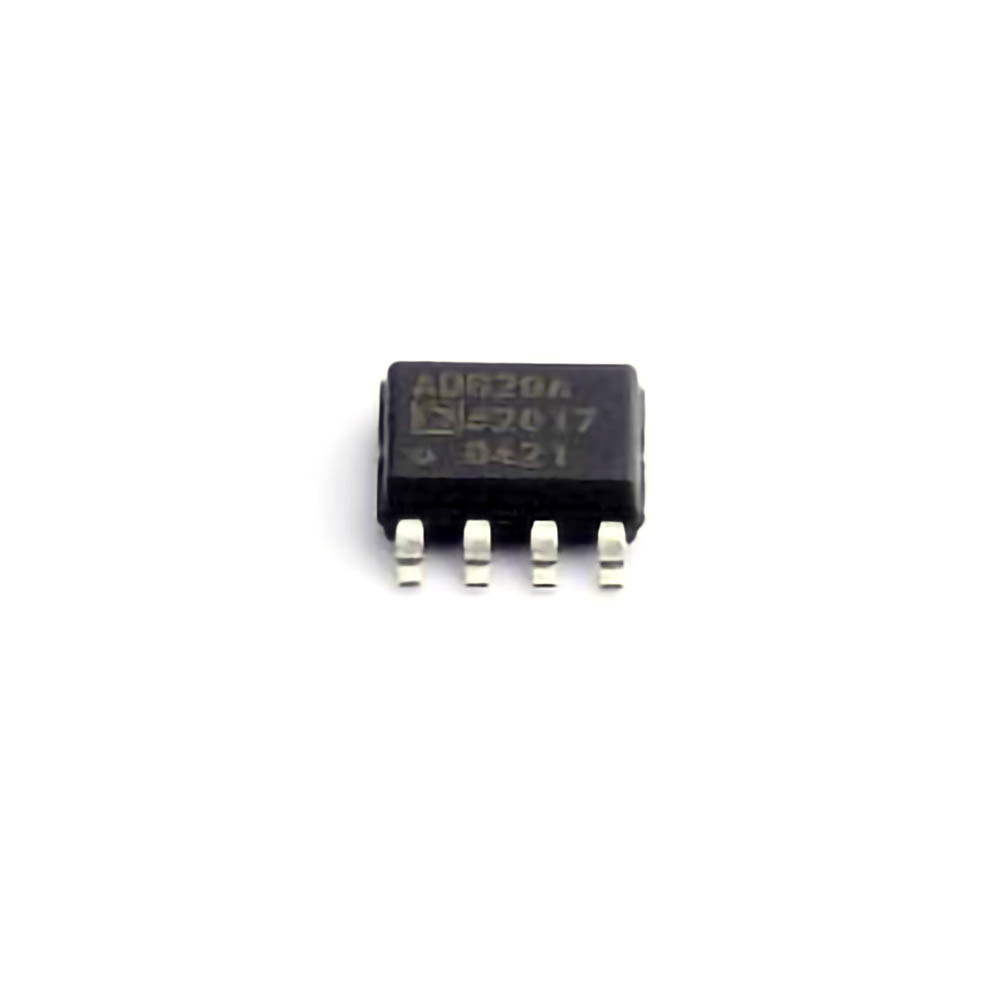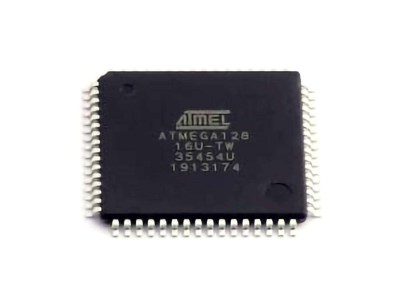
Identifying and Solving Common AD620ARZ Issues
The AD620 ARZ is a precision instrumentation amplifier widely used in electronic systems for amplifying small differential signals. While it offers excellent performance and versatility, users may occasionally face certain challenges. Knowing how to troubleshoot and resolve these issues can help optimize the amplifier’s performance and reliability. Below are some common problems that engineers and designers might encounter, along with their causes and practical solutions.
1. Output Saturation and Clipping
One of the most common issues with the AD620ARZ is output saturation, where the output signal reaches the Power supply limits, causing clipping. This problem typically occurs when the input differential voltage is too high or when the gain is set improperly.
Causes:
Input voltage exceeds the allowable differential range.
Incorrect gain setting, leading to an over-amplified output signal.
Insufficient power supply voltage to the amplifier.
Solutions:
Ensure that the input voltage stays within the AD620ARZ’s differential voltage range (typically ±50 mV to ±100 mV, depending on the supply voltage).
Double-check the gain configuration. The gain is set using an external resistor (RG). Lowering the gain or increasing the input signal level can prevent output clipping.
Verify the power supply voltage. The AD620ARZ requires a sufficient supply voltage (typically ±5V to ±18V) to function properly and avoid clipping. Ensure that the supply voltage is stable and within the recommended range.
2. Excessive Noise or Instability
Another issue often observed is excessive noise or instability in the output. This can manifest as oscillations, hum, or unwanted variations in the output signal, which can compromise the amplifier’s accuracy and performance.
Causes:
Poor grounding or improper PCB layout.
External electromagnetic interference ( EMI ) from nearby components or circuits.
Insufficient decoupling capacitor s on the power supply pins.
Solutions:
Proper grounding is essential for minimizing noise. Ensure that the ground plane is solid and all signal and power grounds are connected to a common ground point.
Check the PCB layout to minimize noise paths. Keep traces as short and direct as possible, especially for the sensitive input and output signals.
Use appropriate decoupling Capacitors (0.1 µF ceramic capacitors) near the power supply pins to filter out high-frequency noise. Place them as close to the pins as possible to reduce supply noise.
For EMI issues, consider using shielding or routing sensitive traces away from noisy components like digital circuits and power supplies.
3. Incorrect Gain Calculation
The AD620ARZ allows users to set the gain via an external resistor, but incorrect gain calculation can lead to performance problems, including insufficient signal amplification or saturation.
Causes:
Incorrect selection of the external resistor (RG) for gain setting.
Failure to account for tolerances in the resistors, especially if the resistor is of low quality or not precision-rated.
Solutions:
Refer to the AD620ARZ datasheet for the correct formula to calculate gain:
[ G = 1 + \frac{50 \,kΩ}{R_G} ]
Ensure the external resistor (RG) is within the recommended tolerance (typically 1% or better).
Use precision resistors for the gain-setting resistor to minimize error in the final gain calculation.
Double-check the value of the external resistor to make sure it corresponds to the desired gain.
4. Power Supply Issues
The AD620ARZ requires a stable power supply for optimal operation. Fluctuations or inadequate power can lead to a host of problems, including output instability, poor performance, and reduced signal integrity.
Causes:
Voltage spikes or drops in the power supply.
Power supply noise or ripple.
Mismatch between the power supply voltage and the recommended voltage range for the AD620ARZ.
Solutions:
Use low-noise power supplies and ensure that they provide a steady voltage within the recommended operating range (typically ±5V to ±18V).
If using a dual power supply configuration, ensure that the positive and negative supply rails are balanced and within tolerance.
Add decoupling capacitors to filter out high-frequency noise from the power supply. Capacitors with values between 0.1 µF and 10 µF are generally recommended.
Use a regulated power supply to prevent voltage fluctuations that could affect the amplifier’s performance.
Advanced Troubleshooting and Optimizing AD620ARZ Performance
While basic troubleshooting steps can resolve many common issues with the AD620ARZ, some advanced troubleshooting techniques are required when dealing with more complex problems. In this section, we’ll delve into deeper troubleshooting methods and optimization strategies for ensuring long-term, reliable operation of the AD620ARZ.
5. Input Offset Voltage Problems
The input offset voltage is a small voltage difference between the inverting and non-inverting inputs of the AD620ARZ when the output is ideally zero. If not addressed, this offset can lead to inaccurate signal amplification, particularly in precision applications.
Causes:
Input bias currents causing an imbalance in the input voltages.
Temperature-induced variations in the input offset voltage.
Solutions:
Use the offset nulling pins on the AD620ARZ to compensate for input offset voltage. Apply a small external voltage to the offset null pins to balance the input.
Ensure that the input bias currents are properly managed by using low-impedance sources at the input.
For temperature stability, use components with low temperature coefficients, especially for resistors in the input circuitry.
6. Input Impedance and Source Matching
The AD620ARZ has a high input impedance, but improper matching between the amplifier’s input impedance and the source impedance can lead to reduced performance, especially in low-level signal applications.
Causes:
High source impedance can cause voltage drops and distortions, especially in precision applications.
Mismatched impedance between the AD620ARZ and the sensor or signal source.
Solutions:
Make sure that the source impedance is low enough to avoid significant voltage drops. The AD620ARZ works well with sources that have impedances up to a few kilohms.
If you are amplifying signals from high-impedance sources, consider using a buffer amplifier (such as an op-amp) between the source and the AD620ARZ to prevent signal degradation.
7. Temperature Sensitivity
Like many analog devices, the AD620ARZ is sensitive to temperature changes, which can affect its performance, such as offset voltage, gain accuracy, and linearity. For applications where the operating temperature varies significantly, temperature compensation techniques are essential.
Causes:
Changes in the semiconductor characteristics due to temperature fluctuations.
Thermal drift in resistors and other components that can affect the gain and offset.
Solutions:
Use temperature compensation methods such as thermistors or resistors with low temperature coefficients in the gain setting network.
For precision applications, use the AD620ARZ in conjunction with a temperature sensor and apply a correction algorithm to account for temperature-induced drift.
Enclose the AD620ARZ in a thermally stable environment or use a heatsink if necessary to maintain consistent performance.
8. Improving Signal Integrity
Sometimes, signal integrity issues can arise, especially when working with high-frequency signals or long wiring distances. These problems can include signal degradation, ringing, or crosstalk, which can severely affect the output of the AD620ARZ.
Causes:
Long signal traces on the PCB that act as antenna s, picking up noise.
Lack of proper shielding or grounding in noisy environments.
Solutions:
Minimize the length of input and output traces. Keep sensitive signals as short as possible and ensure that the layout is optimized for signal integrity.
Consider using twisted-pair wires or shielded cables for long-distance signal transmission.
Add bypass capacitors at strategic points to filter high-frequency noise and reduce the risk of oscillations or crosstalk.
Conclusion
The AD620ARZ is a versatile and highly reliable instrumentation amplifier, but like any complex electronic component, it can encounter specific issues that hinder its performance. By carefully diagnosing common problems such as output clipping, noise, improper gain settings, and power supply issues, you can ensure smooth and reliable operation. Additionally, by using advanced troubleshooting techniques, such as addressing input offset voltage, improving source impedance matching, and compensating for temperature sensitivity, you can further optimize the AD620ARZ for precision applications.
By understanding these common issues and solutions, you can confidently design and maintain systems that utilize the AD620ARZ, ensuring the best possible performance in your electronic circuits.
Partnering with an electronic components supplier sets your team up for success, ensuring the design, production, and procurement processes are quality and error-free.

